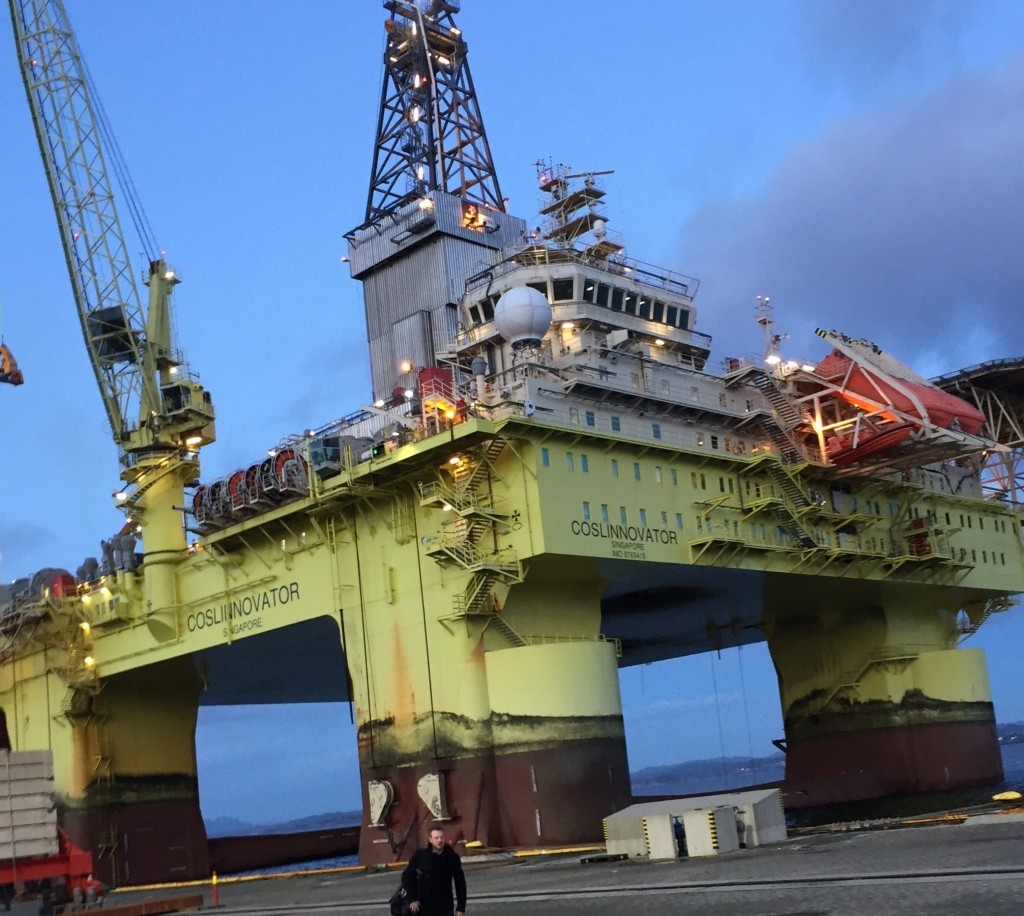
A rig which was battered by huge waves in the Norwegian North Sea leaving one worker dead and two injured had not been tested for the impact of a wave.
Investigators from COSL, Aker Solutions and the Norwegian Petroleum Safety Authority are currently assessing what happened on December 30th which led to the incident.
The COSL Innovator has since been brought back to dock in Bergen while the damage to the rig is assessed.
Aker Solutions employee Rune Morten Narvag was killed while two workers from Statoil were also injured after heavy weather in the North Sea caused huge waves.
The classification of the rig had been carried out by DNV GL for approval to work in Norwegian waters.
Included in the criteria was testing for wind power, wave height and how water tight the rig was should it become submerged.
The classification looks at the instance of a ‘100 year storm’ in the North Sea.
This included a wave height of 32metres (104ft) with a 30% safety margin.
However, it is understood the rig had not been tested to assess the impact the force of a wave could have on the rig.
As a result of the incident last month an investigation is being carried out following which, DNV GL said it would be considering whether its design criteria needs to be changed.
A spokeswoman for DNV GL said: “This rig is designed to withstand a 100 year storm in addition to that, it has a 30% safety margin and even so, if a wave like this should happen, there is a 30% safety margin in the case it could be stronger than the 32metres.
“There should still be an air gap between the bottom of the wave and the bottom of the deck and the living quarters much above that. The windows are approved by the EU Maritime Equipment Directive.
“If something should happen to the rig it should be water tight even if the rig ended up under the water.
“What they’re not tested for is the slamming of the wave because the wave is not meant to reach the deck. We know what happened with the Innovator and that is why there is an investigation ongoing.
“We will have to sit down and really look into our design criteria and whether it is good enough.”
The rig was on contract to Statoil in the Troll field west of Bergen when the accident happened.
The wave hit the rig at the mid-point of two decks of the living quarters that spans one side of the rig at a height of about 20 to 25 metres above the water level.
It broke through six cabin windows of the lower deck and 11 on the middle deck, killing 53-year-old Rune Morten Narvag and injuring two other workers.
Tributes were paid earlier this week to the industry veteran, who started his career in the oil and gas industry aged just 16-years-old.
Staff at Aker Solutions held a moment of silence for the worker, who was described as “hearty” and “sociable and engaged”.
A spokeswoman said: “Rune was very comfortable at sea, and he had worked on several different vessels and rigs these years. He was a sociable, engaged and hearty person who often was the centre of attention in a group.
“He knew how to talk to a crowd, had a solid memory and was very competent. Rune was focused on improvement and several of his suggestions were utilized.
“For us in Aker Solutions this incident is very sad and our thoughts go to those who were close to Rune. We have lost a highly cherished colleague who will be deeply missed.”
